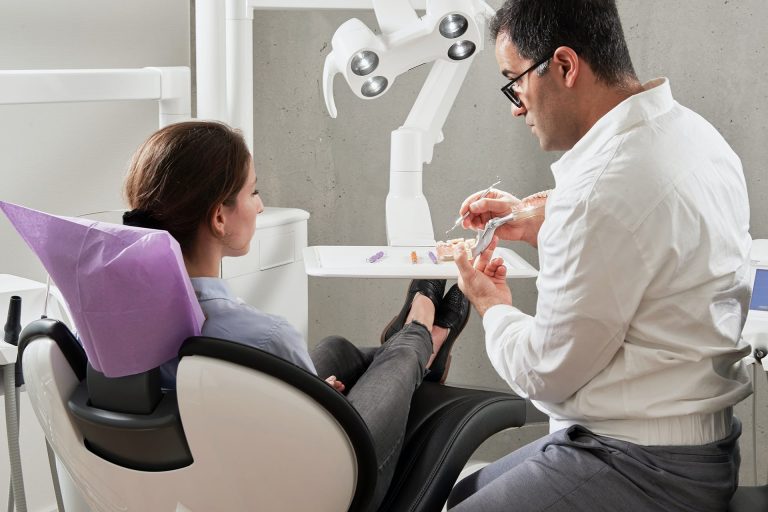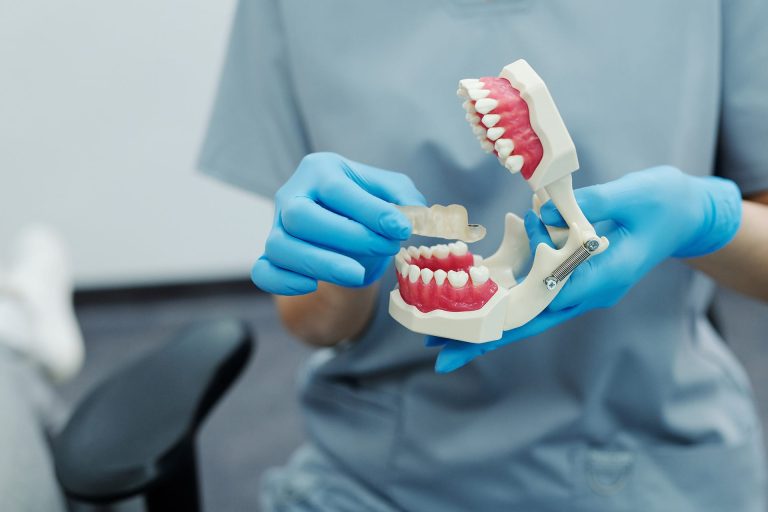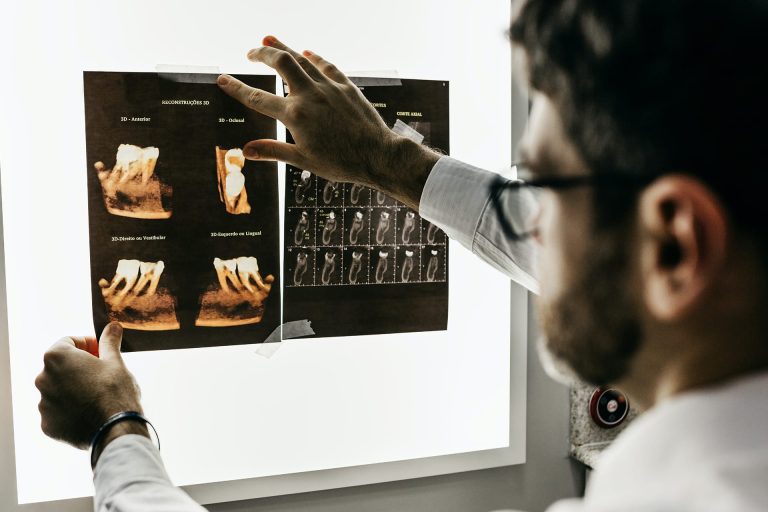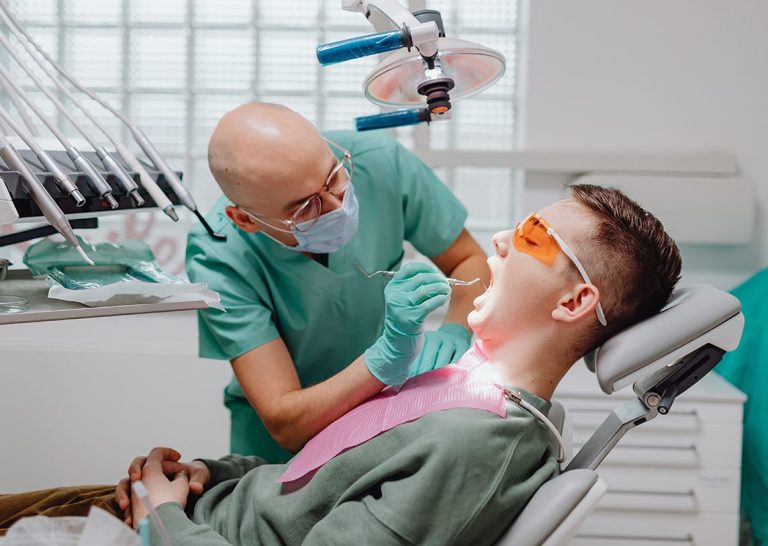Introduction: You’re considering a leap towards a brighter smile, and braces are the ticket. It’s a big step, one that can transform not just your appearance, but also your confidence and oral health. But, as with any significant decision, it’s essential to know what you’re getting into before you take the plunge.
Snippet: Before getting braces, consider the commitment involved – regular orthodontist visits, rigorous oral hygiene, and costs. You should also anticipate the duration of the treatment and potential discomfort.
H2: Understanding Braces and Their Purpose
H3: What Are Braces?
Braces, in the realm of dentistry, are orthodontic devices designed to align and straighten teeth, improving dental health and aesthetics. Typically made from metal, ceramic, or plastic, they apply continuous pressure over a period of time to slowly move teeth into the desired position. The concept behind braces is relatively simple, but the impact they have on your oral health can be profound.
H3: Different Types of Braces
There are numerous types of braces available today, each with its unique set of advantages depending on your specific needs and preferences.
1. Metal Braces: The most common and traditional type, these consist of metal brackets and wires that are visible when you smile.
2. Ceramic Braces: Similar to metal braces in design, but they blend in more with your natural tooth color, making them less noticeable.
3. Lingual Braces: These are fixed on the inner side of the teeth, making them invisible from the front.
4. Invisalign: This type consists of a series of clear, removable aligners that are custom-made to fit over your teeth.
H3: The Purpose of Braces in Dental Health
Braces serve a multitude of purposes in dental health. Primarily, they rectify malocclusions or ‘bad bites’ such as underbites, overbites, and crossbites. By aligning the teeth and jaw properly, braces help improve oral functions like chewing and speaking.
Moreover, they can prevent wide-ranging dental issues down the line, including tooth decay, gum disease, tooth loss, and even digestive difficulties. By aligning your teeth, braces also pave the way for better oral hygiene, as straight teeth are easier to clean and less likely to harbor food particles.
H3: How Braces Work to Improve Your Smile
Braces work by applying consistent pressure to your teeth, causing them to gradually shift into their correct positions. The orthodontist adjusts the tension at regular appointments, ensuring steady progress.
The braces’ components—brackets, bands, and archwires—work in harmony to exert the right amount of force. The brackets are bonded to each tooth, the bands provide additional support, and the archwires connect everything, guiding tooth movement.
Over time, the pressure exerted by the braces reshapes the bone, allowing the teeth to move. The process may take anywhere from a few months to a few years, depending on the severity of the dental issue.
Overall, braces are a highly effective solution for a myriad of dental problems, providing not just a more attractive smile, but also a healthier mouth and a better quality of life. Whether you’re considering braces for yourself or for a child, understanding the process and purpose can help you make an informed decision.
H2: The Process of Getting Braces
Understanding the process of getting braces is essential to prepare yourself for this transformative journey. From consultation to follow-up visits, each step plays a crucial role in achieving that perfect smile. Here’s a closer look:
H3: Consultation and Examination
The first step towards getting braces involves a comprehensive oral examination. During this consultation, your orthodontist will evaluate your dental condition, examining the alignment of your teeth and jaw. They might use radiographs or digital scans to understand the underlying bone structure and the position of roots. This crucial step will determine your suitability for braces and highlight any potential complications.
H3: Designing Your Treatment Plan
Once your oral health status is assessed, your orthodontist designs a personalized treatment plan. This strategy takes into account several factors such as your age, overall oral health, the severity of your dental issue, and your aesthetic goals. Your orthodontist will explain this plan in detail, outlining the type of braces recommended, anticipated length of the treatment, and the projected results.
H3: Installing the Braces
On the day of the procedure, your teeth will be thoroughly cleaned and dried. The braces, which consist of brackets, bands, and wires, will be installed. The brackets are bonded to the front of your teeth using a special adhesive. Bands, if required, are fitted around your molars to provide additional support. The wire, which applies the pressure to move your teeth, is threaded through the brackets and secured in place. This procedure is generally painless, though you might experience some discomfort as your mouth adjusts to the new appliance.
H3: Adjustments and Follow-Up Visits
Once your braces are installed, regular follow-up visits are essential. During these appointments, your orthodontist will adjust the tension on the wires to continue moving your teeth towards the desired position. These adjustments may cause temporary discomfort, but it’s a sign that your braces are working. In addition to adjustments, your orthodontist will also check the condition of your braces and monitor your oral hygiene.
Overall, the process of getting braces is a collaborative journey with your orthodontist. From the initial examination to the regular follow-up visits, each step is crucial in ensuring successful results. By understanding what to expect, you can navigate this journey with confidence and look forward to a healthier, more attractive smile.
H2: The Cost of Braces
Navigating the world of orthodontics can be complex, particularly when it comes to understanding the costs associated with braces. As you delve into the details, you’ll quickly discover that the price can vary greatly depending on multiple factors.
H3: Factors That Affect the Cost of Braces
There are several elements that can influence the cost of braces. The primary factor is the complexity of your case. If your teeth need substantial realignment, the treatment period will be longer, and thus, more expensive.
The type of braces you choose is another significant factor. Traditional metal braces are generally the most affordable option, while more discreet choices like ceramic braces or Invisalign can come with a higher price tag.
Lastly, the geographic location plays a role too. Orthodontic treatment can cost more in urban areas with a higher cost of living.
H3: Insurance Coverage and Payment Plans
Fortunately, you don’t necessarily have to shoulder the entire cost of braces yourself. Dental insurance often covers a portion of orthodontic treatment, especially for children. It’s essential to review your policy or consult with your insurance provider to understand what portion of the cost is covered.
If insurance doesn’t cover the full cost, don’t despair. Many orthodontists offer flexible payment plans, allowing you to spread the cost over the duration of the treatment. This can make the financial burden much more manageable.
H3: Cost-Benefit Analysis of Getting Braces
Investing in braces is not just about achieving a stunning smile. It’s also about improving your oral health. Misaligned teeth can lead to a host of problems, from difficulty cleaning to issues with chewing and speech.
When you factor in these potential health issues, the cost of braces can seem like a wise investment. Plus, the boost to your self-esteem and confidence that comes with a straight, beautiful smile can be priceless.
Overall, while the cost of braces can seem daunting initially, it’s crucial to consider the long-term benefits. With options like insurance coverage and payment plans, orthodontic treatment can be more affordable than you might think. And the investment can pay off significantly in terms of improved oral health and confidence.
H2: Preparing for Life With Braces
Overall, preparing for life with braces can be a daunting task, but armed with the right knowledge and guidance, it can be a smooth transition. Let’s break it down into areas that will require your attention and adaptation: dietary changes, oral hygiene, discomfort management, and dealing with braces emergencies.
H3: Dietary Changes When Wearing Braces
In terms of dietary changes, your meal plans will need a bit of adjusting. For starters, you’ll want to avoid hard, crunchy, or sticky foods. These can damage your braces and prolong your treatment time. Instead, opt for softer foods that require minimal chewing. You’ll also want to limit sugary drinks and snacks, as they can lead to tooth decay under the braces. Remember, your diet plays a significant role in maintaining the efficacy of your dental treatment and overall oral health.
H3: Oral Hygiene With Braces
When it comes to oral hygiene, braces present a new set of challenges. Regular brushing and flossing are no longer enough; you’ll need to learn new techniques to clean around the brackets and wires. Special interdental brushes and floss threaders can be particularly useful. It’s also beneficial to rinse with a fluoride mouthwash, which can help prevent tooth decay. Regular check-ups with your orthodontist are equally crucial to ensure your braces are clean, functioning correctly, and not causing unnecessary damage to your teeth or gums.
H3: Dealing With Discomfort or Pain from Braces
Braces can sometimes cause discomfort or even pain, particularly after adjustments. However, there are ways to manage this. Over-the-counter pain relievers and orthodontic relief wax can help. The wax is applied to the braces to create a smooth surface and prevent them from rubbing against your mouth. Using a warm saltwater rinse can also soothe irritation.
H3: What to Do in Case of a Braces Emergency
Despite your best efforts, braces emergencies can occur. These can include broken brackets, protruding wires, or severe discomfort. Should you encounter any of these issues, contact your orthodontist immediately. In the meantime, there are temporary solutions you can employ. For instance, a protruding wire can be pushed back into place using a pencil eraser, while orthodontic wax can be used to cover sharp edges until you can see your orthodontist.
Life with braces requires a certain level of commitment and adjustment. However, with these tips and guidelines, you can expect a much simpler and manageable journey towards a healthier, more confident smile. Remember, every challenge you encounter during this phase is a step closer to achieving the perfect alignment your teeth deserve.
H2: The Duration of Treatment
Understanding the duration of treatment is a fundamental aspect of any orthodontic procedure. It’s not just about the time you spend in the orthodontist’s chair; it’s also about the commitment you make to maintaining your orthodontic appliances, following your orthodontist’s instructions, and adapting your lifestyle to accommodate your treatment plan.
H3: Average Treatment Time for Different Cases
Orthodontic treatment times vary greatly depending on the complexity of the case. For instance, minor orthodontic issues such as slight overcrowding or minimal spacing problems can be corrected in as little as six months. However, more complex cases involving severe misalignment, significant crowding, or intricate bite problems may require two to three years of treatment.
Meanwhile, the average treatment time for most cases, such as moderate alignment issues or average malocclusions, generally falls between 12 to 24 months. The prognosis of your treatment time will be determined during your initial consultation when your orthodontist assesses the severity of your case.
H3: Factors That Can Influence Treatment Time
There are several variables that can impact the duration of your orthodontic treatment. Firstly, the severity of your dental issues plays a significant role. More severe cases typically require a longer treatment time to realign the teeth and jaw properly.
Your age can also influence the treatment duration. Younger patients often have a faster treatment time due to the flexibility of their growing jaws, whereas adults may need longer due to the rigidity of their bone structure.
The type of orthodontic appliance used can also affect treatment time. Traditional braces often require a longer treatment period compared to modern solutions like clear aligners or lingual braces.
Lastly, your compliance with your orthodontist’s instructions can significantly impact the duration of your treatment. This includes maintaining good oral hygiene, attending all your scheduled appointments, and wearing your orthodontic appliances as directed.
H3: The Importance of Following Your Orthodontist’s Instructions
Adherence to your orthodontist’s instructions is paramount in ensuring a successful treatment outcome. Your orthodontist provides these guidelines to optimize your treatment process and ensure you achieve the desired results within the projected timeframe.
Skipping appointments, not wearing your orthodontic appliances as instructed, or neglecting oral hygiene can lead to complications that extend your treatment time and may even affect the final result.
Remember, your orthodontist is your ally in this journey towards a healthier, more confident smile. Their expertise and guidance are invaluable resources that can help you navigate the intricacies of your treatment process. Thus, following their instructions is not just a recommendation; it’s a crucial part of your treatment success.
Overall, understanding the duration of your treatment, the factors that can influence it, and the importance of following your orthodontist’s instructions can help you to manage your expectations and commit to your treatment plan more effectively. With this knowledge, you are better equipped to embark on your orthodontic journey and achieve the smile you’ve always desired.
H2: What to Expect After Getting Braces
Braces are an orthodontic solution designed to align your teeth and create a healthier, more attractive smile. However, adjusting to life after braces can be a novel experience. Here’s what you can anticipate post-braces.
H3: The Process of Removing Braces
The first step in your braces journey concludes with the removal of the orthodontic device. This procedure is relatively straightforward and painless. Your orthodontist will utilize a special tool to gently detach the brackets from your teeth, followed by the removal of the archwire. Any remaining adhesive is then meticulously scraped off, and your teeth polished to a beautiful shine. Overall, this process typically takes less than an hour, but it signifies a significant milestone in your journey towards a perfect smile.
H3: Wearing Retainers After Braces
Retainers are an indispensable part of orthodontic treatment following the removal of braces. They’re designed to prevent your teeth from gradually shifting back to their previous positions, a phenomenon known as relapse. You may be advised to wear your retainer full-time initially, except while eating or brushing. Over time, your orthodontist may allow you to switch to wearing your retainer only at night. Each case is unique, so it’s essential to follow your orthodontist’s specific recommendations to maintain your new smile.
H3: Maintaining Your New Smile
Preserving your newly aligned smile goes beyond wearing a retainer. It also involves a robust oral hygiene routine. Brushing twice a day, flossing daily, and regular dental check-ups are crucial for maintaining your dental health and keeping your smile looking its best. Limiting consumption of sugary foods and drinks can also help prevent cavities and tooth decay.
In addition to this, you may want to consider professional teeth whitening to really make your smile shine. Braces can sometimes leave your teeth looking a bit dull or yellowed, and a professional whitening treatment can quickly restore their natural brightness.
Overall, maintaining your new smile requires a combination of good oral hygiene, regular dental visits, a healthy diet, and following your orthodontist’s instructions regarding retainer use. The effort is well worth it when you see your brilliant, straight smile in the mirror each day!
H2: Conclusion
Your journey to a brilliantly aligned smile begins with the important decision of getting braces. Remember, it’s not just about aesthetics, but also about better oral health and increased self-confidence. It’s a commitment that requires patience and perseverance, but in the end, you’ll agree it was worth every bit of the experience. So, march forward, knowing that a beautiful and healthy smile awaits you at the end of this adventure.
Key-takeaways:
– Braces are a significant commitment involving regular orthodontist visits, meticulous oral hygiene, and costs, ultimately improving your dental health and aesthetics.
– Various types of braces, including metal, ceramic, lingual, and Invisalign, each offer unique advantages depending on your specific needs and preferences.
– The process of getting braces requires a comprehensive oral examination, personalized treatment plan, and regular follow-up visits to ensure successful results.
– The cost of braces can vary greatly depending on the complexity of your case, type of braces chosen, and geographical location, yet the investment pays off significantly in terms of improved oral health and confidence.
– Adjusting to life with braces involves dietary changes, enhanced oral hygiene, discomfort management, and readiness to handle braces emergencies.
Meta description: Brace yourself for a transformative journey to a perfect smile, as we demystify the intricacies of getting braces, ensuring you’re fully prepared for this orthodontic adventure.






